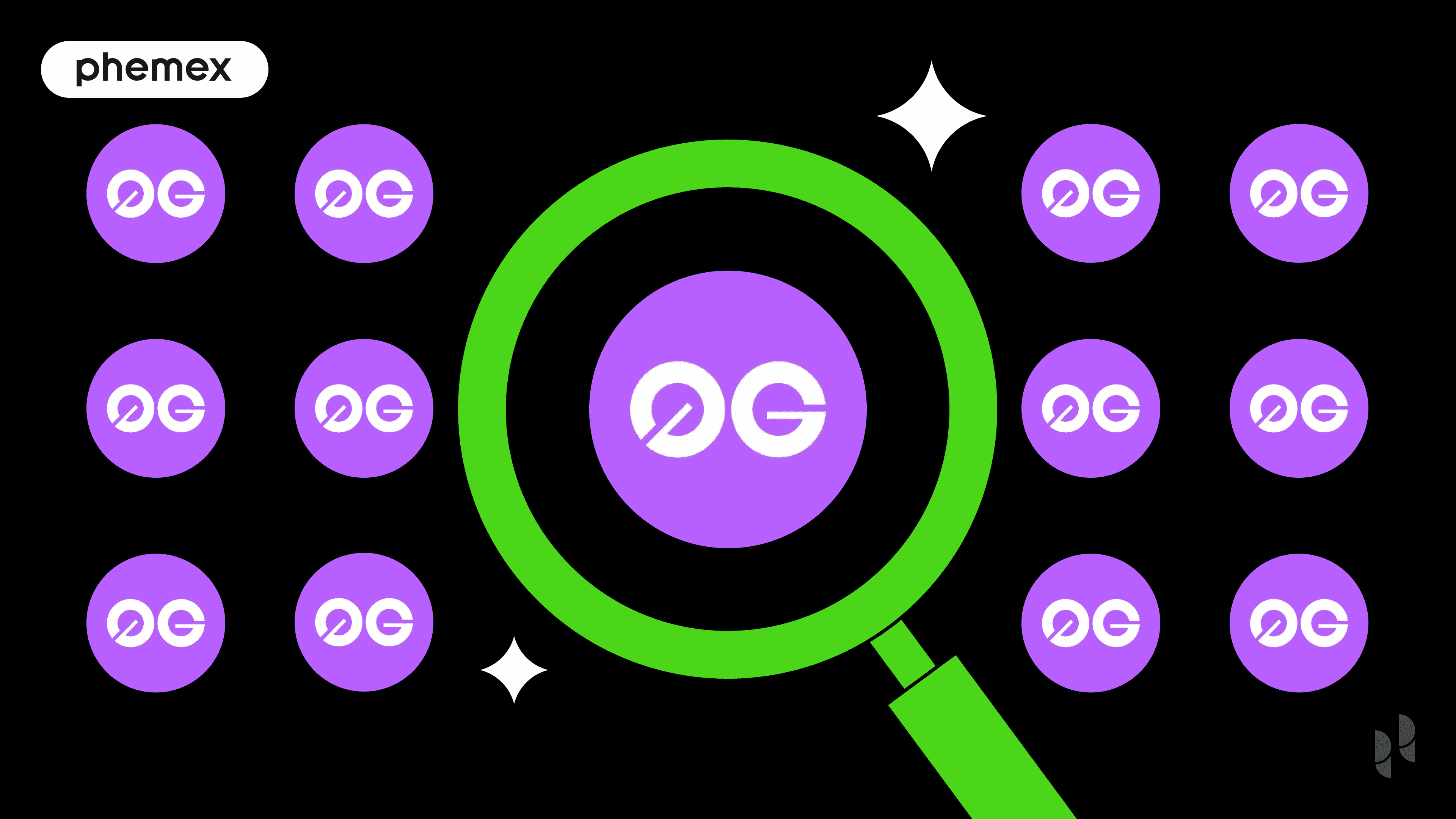Initia (INIT) is a modular blockchain platform combining Layer 1 security with customizable Layer 2 rollups. The project enables scalable decentralized application deployment with optimized consensus, low transaction costs, and IBC interoperability. This article analyzes INIT’s token supply mechanics, use cases, technical infrastructure, validator incentives, and governance model.
Summary Box (Quick Facts)
-
Ticker Symbol: INIT
-
Circulating Supply: 148,750,000 INIT
-
Max Supply: 1,000,000,000 INIT
-
Primary Use Case: Modular blockchain infrastructure for next-gen dApps
-
Current Market Cap: $100 million
-
Availability on Phemex: Yes
What Is INIT?
In a blockchain galaxy teeming with contenders, INIT emerges like a rare supernova. INIT is the native token powering Initia, a modular Layer 1 and Layer 2 platform designed to simplify and supercharge blockchain development. Think of Initia as the secret architect behind futuristic decentralized applications (dApps) - blending scalability, interoperability, and user-friendliness in a seamless experience.
INIT is the bloodstream of Initia’s ecosystem, fueling everything from gas fees to governance. It bridges the gap between complex blockchain architecture and intuitive developer tools, offering a modular world where custom-built "rollups" and "sovereign applications" can thrive without friction.

Source: Initia Docs
Unlike traditional monolithic blockchains that often suffer from congestion and skyrocketing gas fees, Initia’s architecture breaks up tasks into manageable, specialized rollups. Each rollup is an independent blockchain that can be customized to suit specific application needs, providing unprecedented flexibility and scalability.
From a broader perspective, INIT represents a gateway to creating more decentralized societies where digital ownership, community governance, and censorship resistance are not just ideals but operational norms.
How Many INIT Are There?
Here’s the breakdown of the INIT token landscape:
-
Max Supply: 1,000,000,000 INIT tokens
-
Circulating Supply: Approximately 150,000,000 INIT tokens currently
-
Inflationary or Deflationary? INIT features a dynamic model. Initially inflationary to incentivize early participation, but with planned burning mechanisms that aim for long-term deflationary behavior.
-
Token Burn Mechanism: A portion of transaction fees and staking penalties are systematically burned, trimming down the total supply over time.
This dynamic economic model ensures that INIT stays attractive for both early adopters and long-term holders. During the early stages of the network's growth, inflation provides necessary rewards for validators and network participants. As the ecosystem matures, the gradual introduction of deflationary forces (like token burns) aims to stabilize value and prevent runaway inflation.
Moreover, INIT’s tokenomics are designed to balance security incentives with sustainable economic growth. By rewarding those who contribute to the ecosystem while curbing excessive supply over time, Initia cultivates a healthy and resilient financial environment.

Source: CryptoNinjas
What Does INIT Do?
At its core, Initia is all about empowerment. INIT fuels the Initia network in a variety of ways:
-
Gas Fees: INIT is used to pay transaction fees across Initia’s modular rollup network.
-
Staking: Validators and delegators stake INIT to secure the network, earning rewards in return.
-
Governance: INIT holders wield influence over key protocol upgrades and economic parameters.
-
dApp Integration: Developers use INIT to deploy sovereign applications and modular rollups, paying in INIT to access Initia’s infrastructure.
This multi-functional utility ensures that INIT isn’t just a passive asset. It's actively circulated and indispensable within the Initia ecosystem. For instance, developers launching new decentralized finance (DeFi) platforms on Initia will need INIT to create and maintain their rollups. Users engaging with decentralized apps will need INIT to pay for gas fees.
Furthermore, INIT acts as a social layer, aligning incentives between users, developers, and validators. Every participant has a vested interest in the network’s growth, security, and prosperity, creating a self-reinforcing cycle of innovation and adoption.
INIT vs Bitcoin
INIT vs Bitcoin is like comparing a Swiss Army knife to a solid gold bar. Both are valuable, but they serve wildly different purposes.
|
Feature |
INIT |
Bitcoin |
|
Technology |
Modular L1+L2 with rollups |
Proof-of-work main chain |
|
Speed & Fees |
Fast, low-cost rollups |
Slow but secure transactions |
|
Use Case |
dApp hosting, scalability |
Payments, store of value |
|
Security |
PoS validators |
Decentralization via mining |
While Bitcoin remains the "digital gold," INIT is building the multi-level highways of Web3’s bustling future cities. Bitcoin's primary function as a store of value lends it a stability that few cryptocurrencies can match. However, its limited throughput and high transaction costs make it unsuitable for hosting complex decentralized applications. On the other hand, Initia’s modular design addresses these shortcomings head-on, offering faster transaction times, lower fees, and customizable environments for specific application needs.
The Technology Behind INIT
At its core, Initia uses a hybrid Layer 1 and Layer 2 architecture. The Layer-1 is responsible for security and consensus, while the Layer-2 "modular rollups" handle application-specific computations. These rollups aren't one-size-fits-all; they’re customizable, autonomous blockchains, allowing developers to fine-tune consensus rules, tokenomics, and governance.
Unlike traditional Layer 2 solutions that depend heavily on Ethereum for settlement and security, Initia’s Layer 2 rollups are fully sovereign yet interoperable. Developers aren't shackled to any single standard — they can craft bespoke environments optimized for gaming, DeFi, social apps, or NFTs.
Consensus Mechanism:
Initia employs a Tendermint-inspired Proof-of-Stake (PoS) consensus model, renowned for its speed, low latency, and environmental efficiency. Validators are selected based on the amount of INIT they stake, providing robust security without the energy wastage associated with Proof-of-Work systems.
Notable Technologies:
-
Optimistic Rollups: Ensures fast execution while deferring dispute resolution.
-
IBC Compatibility: Initia is built with interoperability at its heart, utilizing the Inter-Blockchain Communication (IBC) protocol to talk seamlessly with other blockchains.
-
Customizable VM (Virtual Machine): Developers can select their execution environments, making Initia highly versatile across industries.

Source: Imperator
Who created Initia (INIT)?
Behind every revolutionary project is a visionary team, and Initia is no exception. Initia was co-founded by a team of ex-Meta engineers, cryptographic researchers, and Layer 1 blockchain veterans. Their collective experience spans from early-stage Ethereum development to cutting-edge AI integrations, giving Initia an enviable pedigree in both technical and strategic dimensions.
The Initia project quietly began development in 2022, operating in stealth mode to build its modular framework away from public pressures. By early 2024, the project completed a successful private testnet, followed by a community-driven public mainnet launch later that year.
Initia raised $10 million in a strategic seed round led by prominent blockchain venture firms such as Polychain Capital and Electric Capital, with angel investments from early Ethereum and Solana contributors. This robust backing provided not just financial support but also access to extensive blockchain ecosystems and strategic advisors.
The Initia team believes that the future of blockchain lies in flexibility and sovereignty. By empowering developers to launch custom modular blockchains, Initia envisions a Web3 world where innovation isn't bottlenecked by outdated standards or centralized gatekeepers.
Initia Key News & Events
Initia may be a rising star, but it's already making waves in the crypto world. Here’s a snapshot of major developments:
-
March 2024: Initia announced a successful $10 million seed funding round, igniting community excitement and attracting top-tier developer interest.
-
May 2024: Launch of Initia's incentivized public testnet, drawing over 50,000 early adopters and developers worldwide.
-
July 2024: Initia integrated IBC (Inter-Blockchain Communication), enabling seamless interoperability with Cosmos-based chains.
-
August 2024: Announcement of strategic partnerships with leading NFT marketplaces to build modular marketplaces atop Initia’s sovereign rollups.
-
October 2024: Rollout of Initia DAO, a decentralized governance layer empowering INIT holders to shape the protocol’s future direction.
-
December 2024: First major airdrop event for early INIT stakers, catalyzing community expansion
With momentum building, it's clear that news about INIT will only become more prominent as adoption grows.
Is INIT a Good Investment?
INIT investment potential is undeniably intriguing. Let's weigh the pros and cons:
Why INIT Could Shine
-
Technical Superiority: Modular blockchains represent the next frontier beyond monolithic L1s like Ethereum.
-
First-Mover Advantage: Very few blockchains offer sovereign rollup customization at scale.
-
Strong Community Growth: The incentivized testnet and DAO initiatives are cultivating an engaged, loyal user base.
-
Strategic Partnerships: Integration with major NFT, DeFi, and gaming platforms offers real-world demand drivers.
-
Exposure through Phemex: With INIT listed on Phemex, a respected exchange, it gains immediate liquidity and credibility, making it easier for users to trade INIT.
Risks to Consider
-
Market Volatility: Crypto markets are notoriously unpredictable. INIT's price could swing dramatically.
-
Regulatory Risks: Global regulators are still figuring out how to classify and treat modular Layer 1s and rollups.
-
Competition: Other modular blockchain projects (like Celestia) are also gunning for market share.
INIT embodies a high-risk, high-reward profile typical of cutting-edge blockchain projects. It could very well be a ticket to the next generation of dApps — or it could face stiff headwinds if broader crypto markets falter. Of course, this isn't financial advice. Always do your own research before investing.
Final Thoughts: The Future of INIT
As the modular blockchain movement gains steam, Initia stands uniquely poised to lead the charge. With its combination of sovereign rollups, PoS security, flexible developer environments, and rapid adoption, INIT could become the backbone infrastructure of a new decentralized internet.
Initia provides the opportunity to get involved early in a transformative technology, but it isn’t without risk. Whether you're a developer looking for a scalable playground or an investor seeking the next breakout gem, Initia offers a compelling proposition.
As always, stay informed, diversify wisely, and keep a close eye on the INIT price — because if Initia delivers on its promises, the best may be yet to come.







